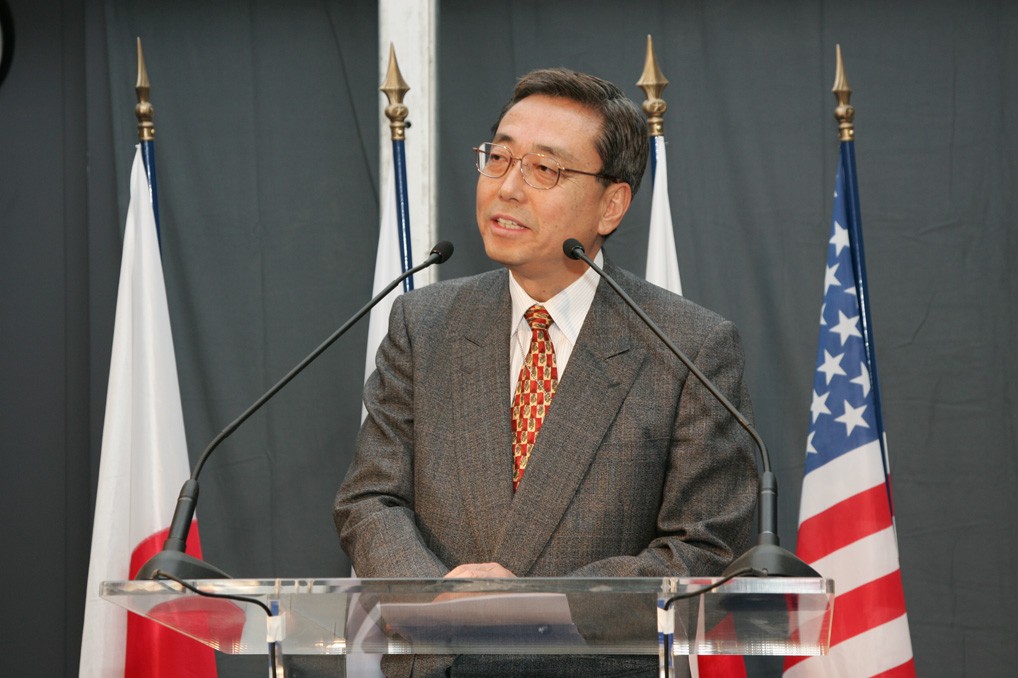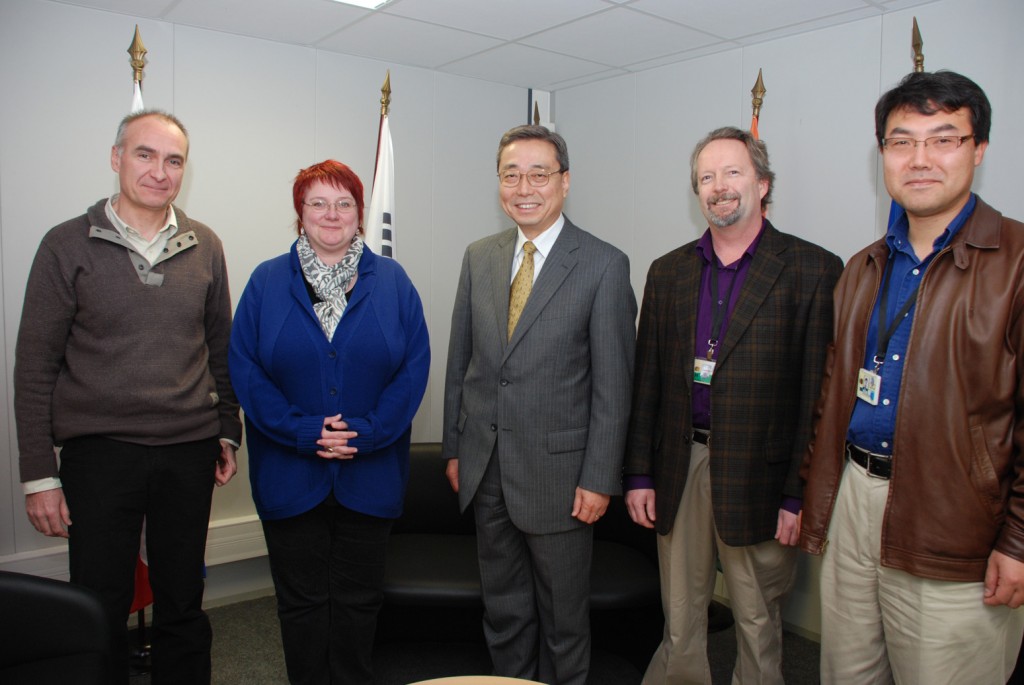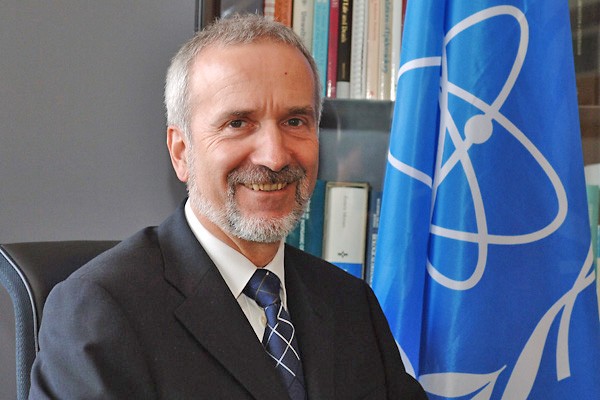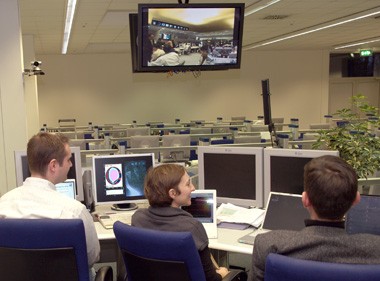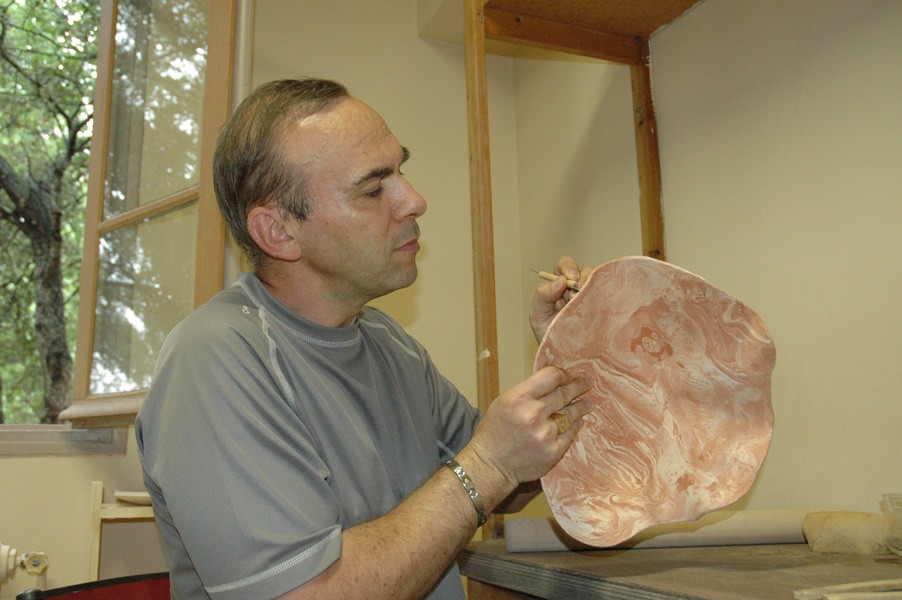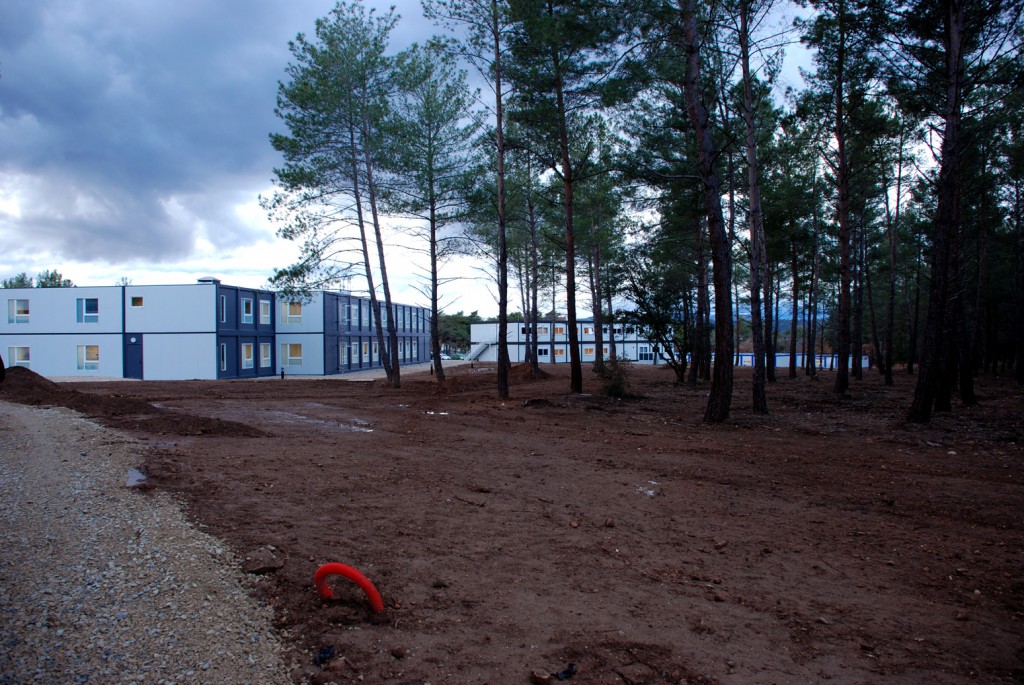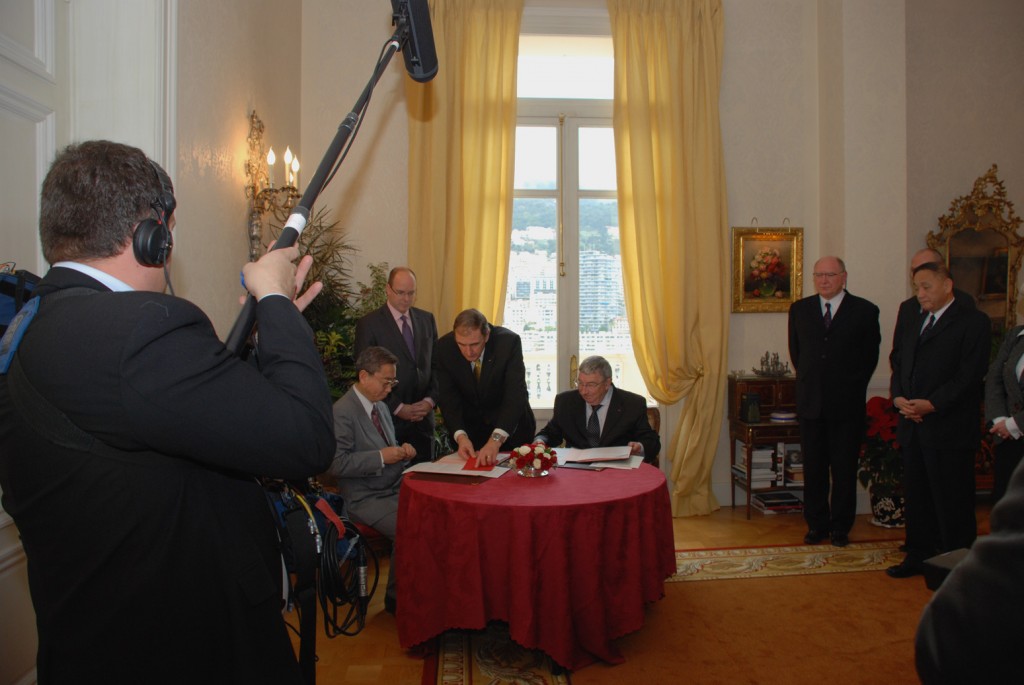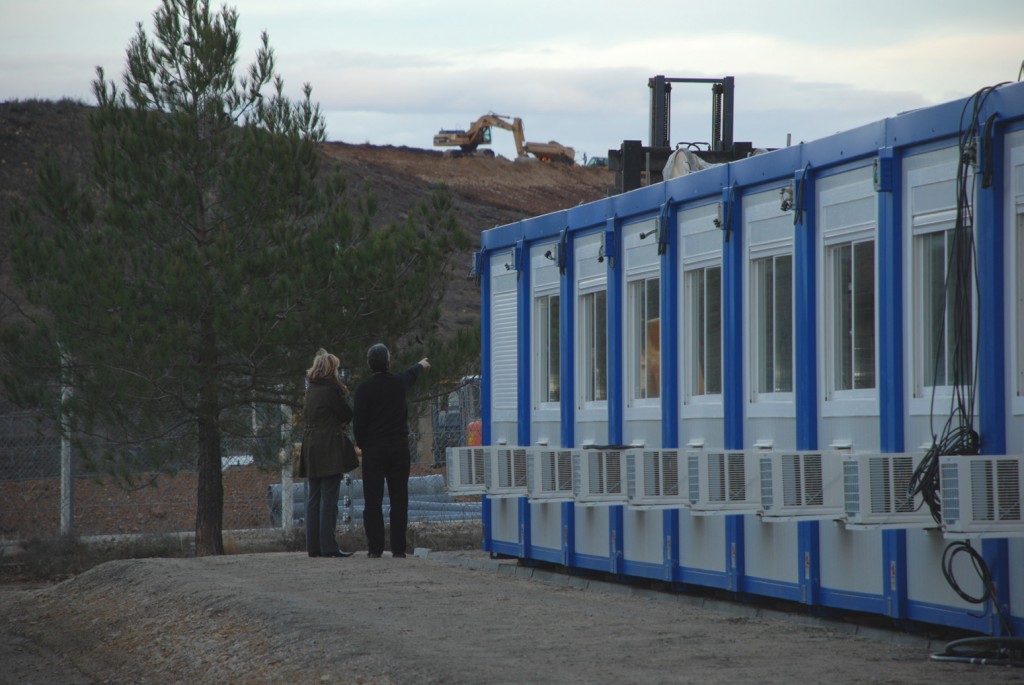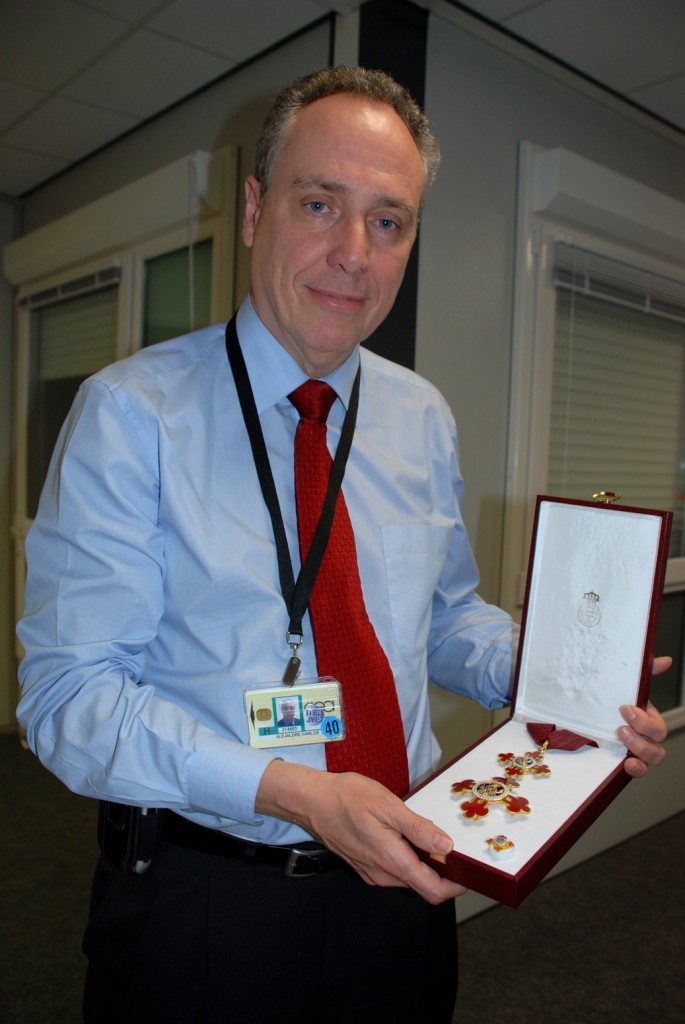For the first time, the ITER staff has elected their official representatives. The polls, specially set up in Meeting Room Nr. 10, were open for two days. Behind closed curtains, the voters had to make their choice out of ten candidates.
Doris Spiegel from Germany, involved in the ITER project and its predecessors since 1989 and currently working as Assistant to the Principal Deputy Director General Norbert Holtkamp, was elected by 65.62 % of the Support Staff (G-Positions) as their "voice". For the Secondees, Craig Taylor was nominated as their representative with 75 % of the votes. Craig works in the Tritium Plant Section. For the professional staff (P-positions), three candidates were elected: Chang Shuk Kim (55.45 %) from Korea working in the Test Blanket Section, Japanese So Maruyama (52.72 %) working in the Fuelling and Wall Conditioning Section and French Bertrand Beaumont (47.27 %) from the Heating and Current Drive Divison. The candidates were elected for one year. The percentage of participation for Category G was 91.42%; for Category S 70.58% and for Category P 83.97%.
The Staff Committee is elected in order to improve the dialogue between the ITER management and the staff. In accordance with the Staff Regulations, the Committee shall be consulted on questions relating to staff welfare and administration.
In particular, the Staff Committee shall:
- defend the professional interest of all staff of the ITER Organization
- make proposals for improving the well-being of the staff
- make suggestions regarding social, cultural and sporting activities for the staff
- represent all staff members vis-à-vis staff associations of other international organizations.
ITER is only one step on the long road to the reality of commercially-generated fusion electricity. But make no mistake: it is a major step." Mr. Werner Burkart has worked as Deputy Director General of the International Atomic Energy Agency (IAEA) and Head of the Department of Nuclear Sciences and Applications since 2000. The IAEA has been the facilitator and supporter since the beginning of the ITER project and it was Dr. Burkart who soundly navigated the ITER negotiations through successive meetings at the IAEA's headquarters in Vienna.
The story of ITER already bears several hallmarks of success. The ITER Parties now represent fully half of the world's population. The establishment of the ITER legal entity and the start of construction clearly represent critical milestones. And the vision of ITER itself - harnessing fusion to realize a future of clean, abundant, low-cost energy - is beginning to provide much-needed inspiration for a new generation of scientists.
ITER is only one step on the long road to the reality of commercially generated fusion electricity. But make no mistake: it is a major step. It has brought new promise and hope to the field of energy research. In recent years, a number of investments in magnetic fusion and plasma physics have clearly made with the ITER machine as the goal. And those investments are beginning to pay off.
From the outset, the International Atomic Energy Agency has been closely involved with the ITER project. The Agency has served as both a moderator and a facilitator of project negotiations. Fusion research has been encouraged - uninterrupted even during the periods of uncertainty that have at times slowed ITER's progress. But as ITER moves forward into a new phase, it is incumbent on the Agency to recast itself in a new role.
How can the Agency best help in the future? A first, essential support function - and one that is traditionally the role of the Agency - is to promote effective information exchange. The power of fusion is of interest to the many participants in relevant Agency-sponsored Coordinated Research Projects. As fusion research progresses, more intensive efforts in plasma physics will be required. Additional satellite tokamaks will be needed to consider and advance alternative options in magnetic confinement. Effective information exchange will be critical to these efforts. By expanding awareness of the project and promoting broader interest in fusion and ITER, Agency outreach efforts can attract new pools of expertise - and over the longer term, can encourage human resource development for fusion research which will also rejuvenate nuclear sciences as a whole. The Agency can also assist by ensuring that a network of agreements is set up to cover the exchange of results from this work.
A second, related function - in my view - is to promote increased collaboration between fusion and fission research efforts on important issues of common interest. Certain aspects of materials research, for instance, could be of value to the ITER effort. In researching defect production in steels, there are significant parallels in comparing the damage rate caused by neutrons from fusion reactors to that that caused by neutrons from next generation fission reactors.
Investigations using new spallation sources and the planned International Fusion Materials Irradiation Facility could uncover synergies in these two fields.
Taking an even broader view, we should remember that, as with any investment in basic research, the benefits of going forward with the ITER project may spread well beyond the field of fusion research. Consider one example. The vast amount of data produced by ITER and its satellite experiments will require advanced vehicles for exchanging this information. Partners worldwide will demand the best possible access to data and information - and the IAEA will make every effort to support such requests. Fusion grids have already been established, but more needs to be done. An analogy might be drawn from the Large Hadron Collider at CERN, which is projected to produce about one percent of the world's internet data when it starts. I would expect similar data volumes to be produced from fusion research operating steady state devices. The drive to advance information technology accordingly will, therefore, probably be one important side benefit from the ITER project. Just as previous large-scale scientific undertakings - such as the space program - have indirectly led to other and unexpected benefits for humanity, it is easy to envision ITER bringing about progress in ways we cannot yet anticipate.
Eighteen years ago, the Agency published the first ITER newsletter (See link). In light of recent developments, the newsletter has likely outgrown its initial mandate. The newsletter readership will change and increase, but the objectives will remain the same as those stated in the very first issue, published in September 1988: the dissemination of broad information and understanding - both about ITER itself and about other activities that materially affect ITER - and the coverage of personal and institutional involvements in this international cooperative effort.
I extend my best wishes to newsletter readers and the editors serving them, as the story of fusion research moves into this exciting new phase. ITER is truly becoming the incarnation of its Latin meaning: "The Way".
On 13 December 2007, experimentation on Japan's JT-60 Upgrade fusion device at Naka Fusion Institute was remotely controlled from Max Planck Institute of Plasma Physics (IPP) in Garching. The two institutes are each operating the largest fusion research device in their respective countries. These joint experiments are to prepare for the remotely controlled work on the international ITER fusion test reactor, construction of which will soon begin at Cadarache, France.
Read more here
Born and raised in the French village Moyeuvre-Grande in the Mosel province by a Polish mother and a Czech father, Pascal Hodasava has been used to an international atmosphere since his first childhood steps. He studied electronics in Grenoble and then completed his voluntary service in Senegal, installing solar cells and wind generators. After his return to France Pascal joined the fusion division at CEA in Grenoble and from 1986 he formed part of the TORE SUPRA team. In 2006 he then joined the still small ITER team in Cadarache. "We were about 20 people in those days. That was fun."
Over the years the focus of his work has moved from electronics towards IT-technology. At the ITER Joint Work Site in Cadarache the 47 year old now works for the Helpdesk, the primary contact point for all IT users. The means busy times these days.
But Pascal is not a computer addict. He is also an excellent photographer and he - believe it or not - makes his own pottery. But his true loves are nature and nature's wonders. For the last 30 years he has spent most of his spare time digging for fossils and minerals. Formerly, he was even Vice-President of the "Club Dauphinois des Mineraux et Fossiles de Grenoble" and since 1995 he is the President of the society "Club des Amateurs de Mineraux et Fossiles" in Pierrevert. "Fossils are fascinating. Imagine you hold an animal in your hand that lived thousands of years ago."
This Thursday, 24 January, Agence ITER France/the Welcome Office invites all the Newcomers to a Welcome Seminar in the Château de Cadarache. The objective is to provide new staff members with essential information and helpful contacts. The Welcome Seminar starts with registration at 8.30, followed by an introduction to the ITER project given by Director-General, Kaname Ikeda. Shawn Simpson will introduce the French Training Program and the Welcome Office will introduce its helpdesk. A buffet lunch will be provided. For more information, contact audrey.duval@cea.fr or eve-mary.ries@cea.fr.
|
Wednesday, 16 January 2008, the ITER Director General Kaname Ikeda and his Excellency, the Minister of the Principality of Monaco, Monsieur Jean Paul Proust signed a Partnership Arrangement including a contribution by the Principality of 5.5 Million Euro for a ten year period. The donation will be used to set up five Postdoctoral Fellowships and to establish an annual International Conference on ITER related research. The Arrangement was signed in the Ministerial Palace in the presence of His Serene Highness Prince Albert II.
The Principality of Monaco is deeply committed to protecting the environment and to encourage sustainable development which is testified by the existence of the Prince Albert II of Monaco Foundation. The Foundation is a very active and dedicated Organization that promotes the vulnerability of the earth's ecosystem with sound words and - if necessary - striking actions: In April 2006 His Serene Highness Prince Albert II undertook a voyage to the North Pole in order to draw the maximum public attention to the consequences of global warming, particularly in the North Pole, and pay tribute to his great-great grandfather, Prince Albert I, the founder of modern oceanography.
DG Kaname Ikeda, His Serene Highness Prince Albert II and his Excellency, the Minister of the Principality of Monaco, Monsieur Jean Paul Proust after the signature.
As such it comes to no surprise that the only two square kilometer measuring but economically and technologically most prosperous Principality has expressed its interest in the ITER project as for the stakes it holds: "Needless to say, the challenge of protecting our environment and implementing measures to enable natural resources to be protected, extends far beyond the borders of each country", Prince Albert II writes on his website: "By definition, this is a common global challenge [...] This situation compels each one of us to take action if we want to protect the planet for future generations. Rest assured of my personal and unfailing commitment towards achieving this goal."
Press Release
Thirty years ago, 25 January 1958, the director of Harwell Laboratory in Britain, called a news conference attended by 400 reporters. He announced that a secret, experimental machine called "Zeta" - Zero Energy Thermonuclear Assembly - had produced constant temperatures in a hydrogen gas of five million degrees centigrade. Neutron measurements indicated that thermonuclear reactions were taking place. Zeta had apparently produced the world's first controlled fusion reaction - he was 90 percent sure, he said, under hard questioning. "To Britain, this discovery is greater than the Russian Sputnik."
The "sputnik" in question was Sputnik 1 that had been launched into outer space by the Soviet Union a few months earlier, the first artificial satellite ever to be put into space and a huge media triumph for the Soviets. This was the Cold War era and British newspapers were quick to trumpet this national success: "The Mighty Zeta"..."Limitless Fuel for Millions of Years".
Just a few months later hopes were dashed. It was shown that the neutrons supposed to be present had been produced by the hot, wriggling gas in the torus escaping the surrounding magnetic fields and touching Zeta's metal casing.
Research on a different version of the pinch machine is still going on. The research even hit the film screens in Ocean's Eleven (2001), when a "pinch" is stolen and used to disrupt power in Las Vegas. In practice this wouldn't have worked of course...
Read more here
Now that ITER staff has increased to about 300 (including contractors and temporary staff), and with another 90 people expected to arrive over the next six months, office space is becoming increasingly scarce and cramped. Fortunately relief is on its way, for three new buildings at a stone's cast away are almost ready to house another 146 people.
The construction of these buildings which are located in the middle of pine trees, on the playground of squirrels and wild boar, started about four months ago. The three new buildings, with a total surface of approximately 1800 square metres, will provide for office space, meeting rooms and storage. They are planned to be ready by the first week of February and office moves will begin shortly after. The Department of Central Engineering and Plant Support including the Design Office will move into the new building and subsequently some of the office space in building 519 will be redeployed for the remaining departments.
Carlos Alejaldre, Deputy Director General of the ITER Organization and responsible for the Safety Department is now an "Ilustrisimo Senor". On 15 December 2007, the Spanish Minister of Science and Education, Mercedes Cabrera Calvo-Sotelo, awarded him the medal "Encomienda con Placa de la Orden Civil de Alfonso X el Sabio" on behalf of His Majesty King Juan Carlos I. The Medal of Honour is awarded by the King for distinguished merits to education, science and culture.
Realizing the importance of fusion and the worldwide effort in this regard, Pakistan has launched a National Tokamak Fusion Program to develop human resource and capacity building. Under this program, the Government of Pakistan plans to install a small tokamak (like HT-6M of Hefei , China ) along with various accessories and diagnostics so as to acquire the basic scientific knowledge and the technical know-how of the fusion technology.
|


